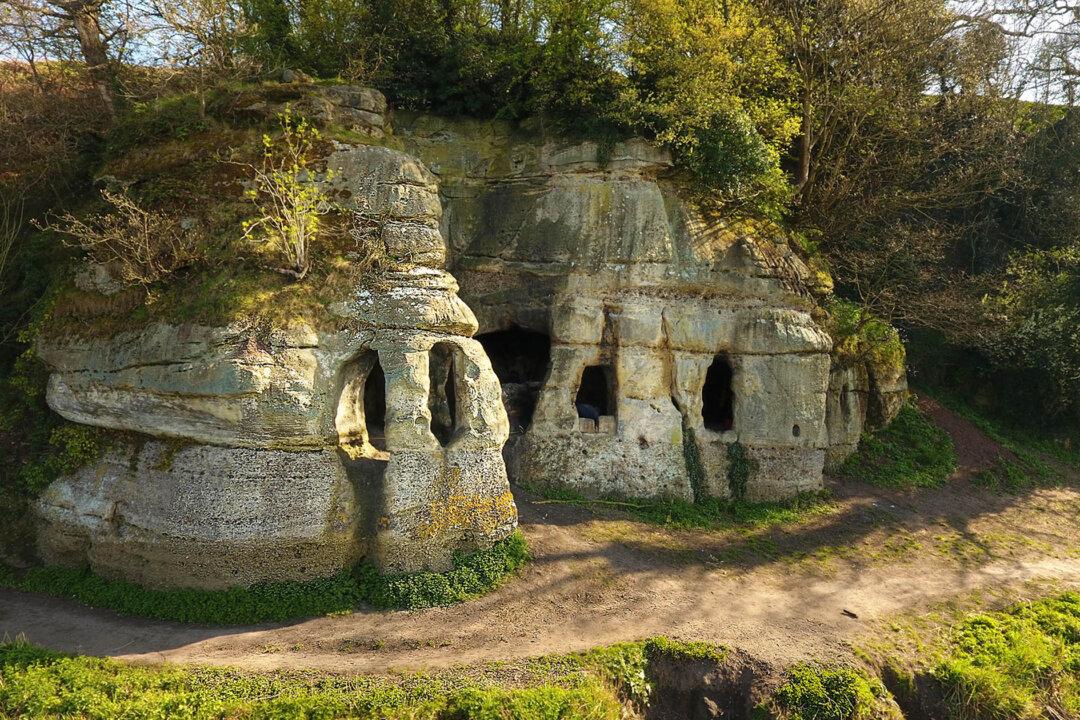Archaeologists in the UK conducted a detailed survey of an antique cave dwelling believed to date from the early ninth century. The cave was once thought to be a “folly” created in the 1700s by an English noble, for him to dine inside of with his friends.
A new study by the Royal Agricultural University (RAU) and Wessex Archaeology now believe the dwelling—known as the Anchor Church Caves—was carved out of the soft sandstone rock in the early medieval period.






